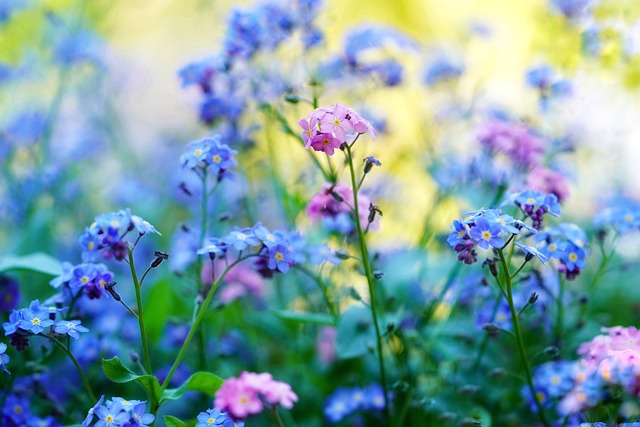
Gather some ideas for planning your garden, whether it will be for home or commercial use. With a little research, you can learn exactly what you need, which will keep you from spending money on seeds you can’t use, or unnecessary equipment.
Shoveling soil that is mostly clay can be difficult because of the hardness of the soil, and because it sticks to the shovel. Coat and buff the digging end of the shovel with automobile wax to make digging easier. The wax will enable the clay soil to simply slide off the shovel, and will also prevent the shovel from rusting.
You can use the wooden handles of your tools as measurement sticks. Tools with substantial handles, like rakes, hoes and large shovels are great for taking measurements. Place the handles on the ground and measure them. Have a marker handy, and mark the distance with it. Next time you work in the garden, you can have a larger ruler with you!
Baking Soda
Don’t bother with expensive chemicals if your plants start to sport powdery mildew. Mix some baking soda and a very small amount of liquid soap into water. You then want to spray this mixture on your plants one time a week until you notice the mildew disappear. Baking soda is safe for use on your plants and is a gentle, but effective way to care for your plants.
Use bulbs to ensure continuous flowers throughout the spring and summer. Most people have no trouble successfully growing bulbs, and their flowers will return each and every year. Different types of bulbs bloom at different times, so if you choose appropriately, you can have blooms from early spring to late summer.
Fall edibles are a wonderful addition to your garden. A hollowed out pumpkin can become a festive container for kale and lettuce. Slice a hole around the stem, and pull the pumpkin top out. Then remove the guts and use Wilt-Pruf to cover the insides and prevent rot. After you have finished this, you will be ready to start planting.
To keep pests away, you can use plants in the garden or other natural materials. Slugs who want to enter a vegetable garden, for example, can be repelled by a simple border of marigolds and onions. Mulch around the bottom of trees and shrub seedlings with wood ash to reduce unwanted infestation of pests. These methods are environmentally-friendly and mean you do not have to resort to harsh chemicals.
Select a specific type of plant to be the focal point of your garden. There should be a solid focal point for every good garden design. The best focal points are those plants that really stand out from those that are adjacent.
Always dress appropriately when horticulture in order to protect yourself from the harmful effects of the sun. Pair sunglasses with wide-brimmed hats and a dab of sunblock. Protecting yourself from the sun will lower your chances of getting skin cancer, as well as prevent premature aging from sun damage.
Heat softens vegetables, so you can damage them immensely by pulling them out of the ground or cutting them off vines when it is too hot outside. Twisting could cause plant damage, so ensure that produce is removed by cutting only.
As you are working in your garden, you must take care to protect both knees. Bending from a standing position for excessive amounts of time can be difficult for many people. You should kneel while tending to your plants for the sake of reducing stress to your spine. For extra comfort, purchase a knee pad for use as a cushion between your knees and the ground.
When planting seeds, make sure to take your time. Begin by adding moisture to the dirt. You should then spread the seeds evenly, and make sure they have room to grow. Look at how big the seeds are, multiply that by three, and plant them down into the earth accordingly. Also keep in mind that there are some seeds you should not bury, as light is essential for their growth.
When you’re making a compost pile, you should use fresh and dried plants to get it started. Examples of good green material to use for compost include grass clippings, flowers, leaves, and weeds. Dried plant matter, on the other hand, includes shredded paper, used wood chips and straw. Avoid using ashes, charcoal, diseased plants and meat-eating animal manure.
It is a great idea to help your garden by ruffling seedlings, either with cardboard or with your own hands, a couple of times each day. You may think it odd, but studies show that this action results in plant growth that is more substantial than would otherwise be achieved.
You will need the correct information, lots of patience, and the ability to spend time working outside. The effort will pay off, and you will see a good reward for your hard work.